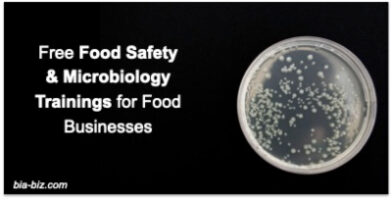Crafting Food Values: A Blueprint for designing healthy products with brand integrity (Free Toolkit)
Food manufacturers have a profound impact on people’s lives, health, and the planet. Recognising this influence, responsible companies incorporate these factors into their core value proposition. This integration is imperative for conscientious food manufacturers, particularly in light of the global challenges surrounding obesity, increased calorie intake, and the decline in nutritional quality of food.
Prior to kicking off the Innovation – Product Development Process, a product developer needs to be clear on the companies Food Values and what the company stands for as this will influence the product design.
Food Values encapsulate the principles, beliefs & philosophies guiding the company’s approach to food and its supply chain.. They are the cornerstone of the product strategy.
Externally, Food Values communicate the company’s stance to consumers and help attract like-minded employees. Internally, they provide vital guidance to product development, dictating what is permissible in product design, as well as directing procurement efforts in raw material sourcing. Delve deeper into the significance of food values with this 3-minute video and access our free Food Values questionnaire to refine your value proposition and organisational ethos. Read on below o learn more.
You will face many tough questions as you establish your food values. The 4 main areas to explore are health, ingredient standards, packaging standards and ethical standards.
Health
- What is the company position on Health? For global companies this can be challenging as the definition of what constitutes nutritious products varies globally.
- Are there any health concerns associated with your products or packages? This requires a deep analysis and may lead to products being reformulated.
- Do your products provide a source of nutrition? You may use nutritious ingredients however the overall product needs to be assessed under this lens.
- Are your products gut healthy? With the global gut health trend, understanding Microbiome and the relationship between diet, gut and health is essential for food manufacturers who want to provide ‘healthy calories’ to consumers. It is difficult for consumers to find and easily identify gut healthy products on the shelf, a consumer needs to be versed on how to diagnose a label. Products advertise gut healthy ingredients, however the overall product is not gut healthy . Learn more about Nutrition
- Do you have a position on pesticides, GMO’s & allergens? This is needed to provide direction on raw material sourcing.
- Do you have a position on the use of organic or natural ingredients?
- Do you have a position on fortification of products with micronutrients?
- Are your products clean label?
- Are your products minimally processed?
- What is your position on honesty in labelling and advertising? Discerning consumers read labels, do you have long list of ingredients or unrecognisable ingredients in your products?
Ingredient Standards
How do you choose Ingredients for your products? There are 4 main areas to explore when it comes to ingredients; additives, sweeteners, salt, fats/oils
Additives
- Are you knowledgeable on natural and artificial additives?
- Have you made an informed decision about the additives being used in your product portfolio?
- Do you allow the use of artificial ingredients/additives?
- Do you allow/use natural or artificial colours in your products?
- Do you allow the use of artificial flavour enhancers e.g. monosodium glutamate or other forms of glutamic acid/free glutamates?
As with many areas of science there is contradictory information on ingredients e.g. free glutamates. My rule of thumb when establishing food values, if an ingredients is controversial find an alternate.
Sweeteners
What sweeteners do you allow/use in your products e.g.
- Natural plant based high intensity, low calorie, low GI sweeteners e.g. Stevia, Monkfruit/Luo Han Guo
- Natural sweeteners e.g. raw honey, dates, coconut sugar, maple syrup, fruit purees
- Sugar, modified sugar or sugar extracts e.g. sucrose, glucose, fructose, high fructose corn syrup, barley malt syrup, cane juice
- Sugar Alcohols (end in “itol”) e.g. xylitol, erythritol, sorbitol
- Artificial sweeteners e.g. aspartame, sucralose, saccharin, acesulfame K
Are you knowledgeable on the different categories of sweeteners and their health implications and have you made an informed decision about the sweeteners (and the limits) being used in your product portfolio?
Fats/Oils
- Are you knowledgeable on the different types of fats/oils and their health implications. Have you made informed decisions about the fats/oils being used in your products? There are several things to consider when choosing fats e.g. the type of fat (saturated/unsaturated), the fatty acid chain length, how it was processed, the omega 3:6 ratio and the smoke point. If you heat the fats/oils in your manufacturing process, are you familiar with the smoke point, going above the smoke point could be an issue for gut health.
- Are the fats/oils used in your products prone to oxidation? This can negatively affect sensory and shelf life.
- Do the fats/oils used in your products come from sustainable sources?
Salt
What type of salt do you use/allow in your products e.g. table salt, sea salt, Himalayan salt and do you have a maximum salt limit for your products?
Packaging Standards
Have you designed your packages for positive consumer interactions? Packaging is the consumers first and last impression of the product and can be an influencer of choice. Where products on the shelf are equal packaging can be the differentiator.
Packaging can drive an emotive response and you do not want consumer to have a negative package interaction experience with your packages as this affects purchase and re-purchase. As you define your packaging values here are some areas to explore
- Is your package easy to carry, hold, pour and serve?
- Is your package easy to open?
- Does your seal perform for the lifecycle of the package?
- Is your package safe during use?
- Does your package have a clear intuitive opening mechanism?
- Is your package easy to store?
- Is your label easy to read and informative?
- Can all consumers of all ages read the print with ease. Small print is especially challenging for consumers.
- Do you use smart technology to increase consumer interaction?
- Is your package environmentally friendly and sustainable?
- Are your packages secure/tamper evident?
- Is your package recyclable, compostable or reusable?
- Do you use excess packaging?
Additional Tools & Trainings on Packaging as you explore this area:
Ethical Standards
Food ethics lie at the heart of food values and there are many ethical issues facing the food industry. To truly establish food values your company needs a position on social responsibility and ethical standards. Areas to explore
- Food safety i.e. are you certified to a globally recognized food safety standard?
- Fair trade
- Fair labour
- Animal welfare
- Environment & sustainability
- Sourcing e.g. will you source locally, regionally or globally
- Business practices
- Competitiveness and pricing
- Employee standards e.g. code of conduct, safety, diversity & inclusion
A key challenge for companies who distribute across markets is the differences in regulations & standards between countries. Consumers expect companies to have the same standards globally. Being certified to a global standard is becoming a minimum requirement for food businesses.
In summary:
A companies food values
- Are unique and can act as a differentiator, giving competitive advantage.
- Influence the public perception of the company and the brand image.
A cohesive and clearly articulated set of values aligned to consumer needs:
- Increases the power of a brand.
- Provides guard rails for product developers.
- Provides guidelines for raw material sourcing.
- Help to attract employees with similar values.
If a company does not specify food values as part of their product strategy then product developers will be designing in a vacuum and may develop products that don’t fit with the companies brand image.
Download my free Food Values Questionnaire and start to explore your food values and what you stand for.






